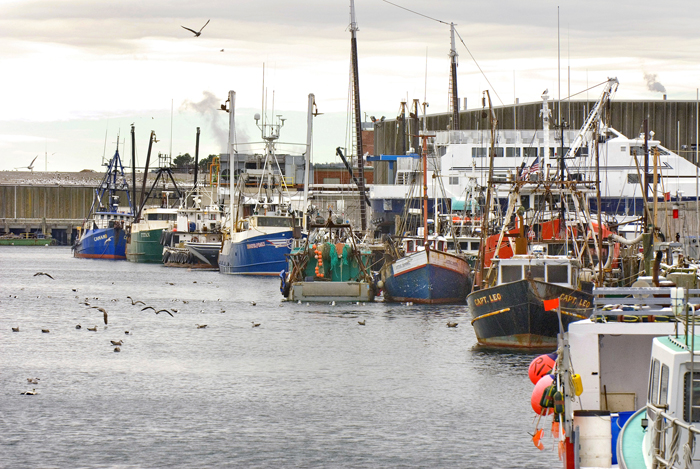BOSTON — Federal fishery managers told beleaguered New England fishermen on Friday that they’ll try to cover the millions it costs to hire required at-sea catch monitors.
But they also warned they couldn’t guarantee the funds because of automatic spending cuts that kicked in Friday, as well as the lack of a federal budget for the 2013 fiscal year.
Regional fishermen who target bottom-dwelling groundfish, such as cod and flounder, are facing massive cuts in what they’re allowed to catch during the 2013 fishing year, which begins May 1. A 77-percent year-to-year decrease in the catch of cod in the Gulf of Maine is among the worst in the slate of reductions many fishermen say will end the local industry.
And fishermen must absorb those cuts on top of paying for the at-sea monitors, which track what they haul in and what they discard to try to ensure accuracy in a management system that relies on strict quotas for each species.
The government has covered that expense since the monitors became mandatory on a certain percentage of fishing trips in 2010. But the fleet was expected to pay for the monitors for the first time in 2013.
Many fishermen have said with their radical declines in catch, it will be impossible to pay the expense, estimated at about $6.7 million for the fleet.
In a letter to lawmakers last week, fishermen asked them to push the National Oceanic and Atmospheric Administration to find a way to cover the costs.
On Friday, the Northeast’s top federal fisheries scientist, Bill Karp, said NOAA recognizes “this will be an exceptionally difficult year for fishermen so we are working on a plan to cover as much of these costs as possible at NOAA.”
But he added, “We cannot definitively commit to this because of the high degree of uncertainty due to the potential effects of sequestration and the lack of a FY13 budget.”
In a statement, Jackie Odell of the Gloucester-based Northeast Seafood Coalition, an industry group, said the coalition recognizes the current budgetary and political climates are difficult.
“We’re grateful that NOAA Fisheries is listening to the concerns of the groundfish industry and are making efforts to help mitigate draconian reductions facing our fishermen,” she said.
In recent weeks, NOAA has moved to try to ease the impact of the coming cuts in catch limits, including by allowing fishermen to increase their catch by carrying over a percentage of their unused quota from 2012.
The agency has also proposed increasing the local catch of monkfish, which is an alternative species for many groundfishermen.
Send questions/comments to the editors.



Success. Please wait for the page to reload. If the page does not reload within 5 seconds, please refresh the page.
Enter your email and password to access comments.
Hi, to comment on stories you must . This profile is in addition to your subscription and website login.
Already have a commenting profile? .
Invalid username/password.
Please check your email to confirm and complete your registration.
Only subscribers are eligible to post comments. Please subscribe or login first for digital access. Here’s why.
Use the form below to reset your password. When you've submitted your account email, we will send an email with a reset code.